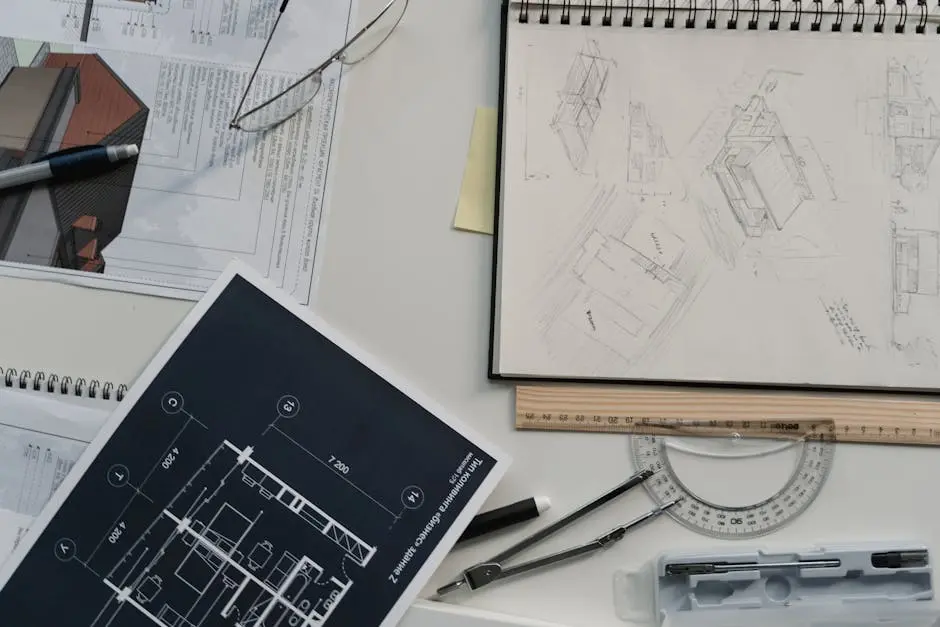Graphic design is an ever-evolving field that reflects the changes in technology and culture. Staying updated with the latest trends is crucial for designers who want to remain relevant and innovative. In this article, we’ll explore the current trends shaping the graphic design industry.
Emphasis on Minimalism
Minimalism continues to dominate graphic design, focusing on simplicity and functionality. This trend emphasizes the phrase ‘less is more’ and encourages designers to strip away unnecessary elements.
With an increased focus on user experience, minimalistic designs lead to cleaner layouts and improved navigability. As a result, viewers can focus on the message without distraction.
By adopting a minimalistic style, brands can convey elegance and sophistication. This approach resonates particularly well with modern audiences that appreciate clarity and purpose.
Moreover, minimalism allows for versatility across different mediums, making it a favorite among web and print designers alike. It’s clear that this trend is not fading anytime soon.
Bold Typography Choices
Designers are using striking typography to create visual impact and convey messages effectively. Bold typography has the power to stand out and draw viewers in, making it a popular choice for promotional materials.
Large, attention-grabbing fonts can anchor a design and serve as a central focal point, allowing them to effectively communicate the brand’s identity. When paired with contrasting colors, bold typography creates an unforgettable experience.
Additionally, unique typefaces add personality to a design. This trend encourages experimentation, enabling designers to break away from conventional fonts and explore custom lettering.
An effective use of typography can also enhance storytelling within the design. By aligning text styles with the tone of the message, designers can forge a deeper emotional connection with their audience.
Vibrant Color Palettes
Bright, bold colors are being used to attract attention and energize designs. These vibrant color palettes help create high-impact visuals that can evoke emotions and captivate viewers.
The shift towards vibrant colors represents a departure from muted tones, reflecting a desire to embrace positivity and creativity in a post-pandemic world. Colors that pop can energize a brand and make it stand out in a crowded marketplace.
Furthermore, combining unexpected color combinations can also create a unique aesthetic that leaves a lasting impression. Designers are encouraged to push boundaries and play with colors to achieve fresh, revolutionary visuals.
Trend observations show that brands leveraging vibrant colors are often more memorable and relatable, boosting engagement and customer loyalty. Embracing this colorful wave can enhance a designer’s toolkit significantly.
Sustainable Design Practices
Eco-friendly design is becoming a priority, with an emphasis on sustainability and responsible choices. Designers are increasingly incorporating sustainable practices into their work, reflecting a growing awareness of environmental issues.
From utilizing recycled materials to digital design solutions that reduce waste, the focus is on creating designs that benefit both the client and the planet. This trend goes hand in hand with consumers’ increasing preference for brands that prioritize sustainability.
Moreover, designers are adopting eco-friendly color palettes inspired by nature, which often feature earthy tones and organic shapes. These choices not only represent value-driven design but also reinforce a brand’s commitment to environmental responsibility.
The movement towards sustainable design practices is reshaping the industry, encouraging professionals to be conscious stewards of resources while pursuing creativity. As this trend becomes more mainstream, it elevates the moral compass of graphic design.
Incorporation of 3D Elements
The use of 3D graphics is growing, helping to create more immersive and engaging designs. By integrating 3D elements into graphic design, artists can bring depth to their compositions, making them more dynamic and realistic.
This trend has become particularly popular in fields such as branding and advertising, where creating memorable imagery is crucial. The addition of dimension can elevate a design and captivate audiences like never before.
Furthermore, advancements in technology make it easier for designers to experiment with 3D modeling and animation. As tools become more accessible, we can expect to see an even greater integration of three-dimensional elements in various forms of media.
The evolution of virtual and augmented reality also plays a critical role in this trend, pushing design further into interactive territories. In this way, 3D design is set to transform how concepts are visualized and experienced.
Integration of Motion Graphics
Motion graphics are increasingly popular, adding depth and dynamism to visual storytelling. This trend capitalizes on the lure of animation to capture audiences’ attention and convey messages in a more engaging manner.
Whether it’s through explainer videos, advertisements, or social media content, the integration of motion graphics enhances user engagement and retention. This form of design breathes life into still images, making concepts easier to grasp.
As audiences respond favorably to visual dynamism, more brands are investing in motion graphics to elevate their marketing strategies. The ability to relay information quickly and creatively makes this trend invaluable.
While previously limited to video, motion graphics are now being adapted for various platforms, including websites and apps. As we continue to move towards a more animated world, the future of graphic design will undoubtedly embrace this trend.
Final Thoughts on Graphic Design Trends
By keeping an eye on these trends, graphic designers can create compelling and contemporary work that resonates with audiences. Embracing these changes will not only enhance their skills but also ensure they remain competitive in a rapidly changing landscape.


